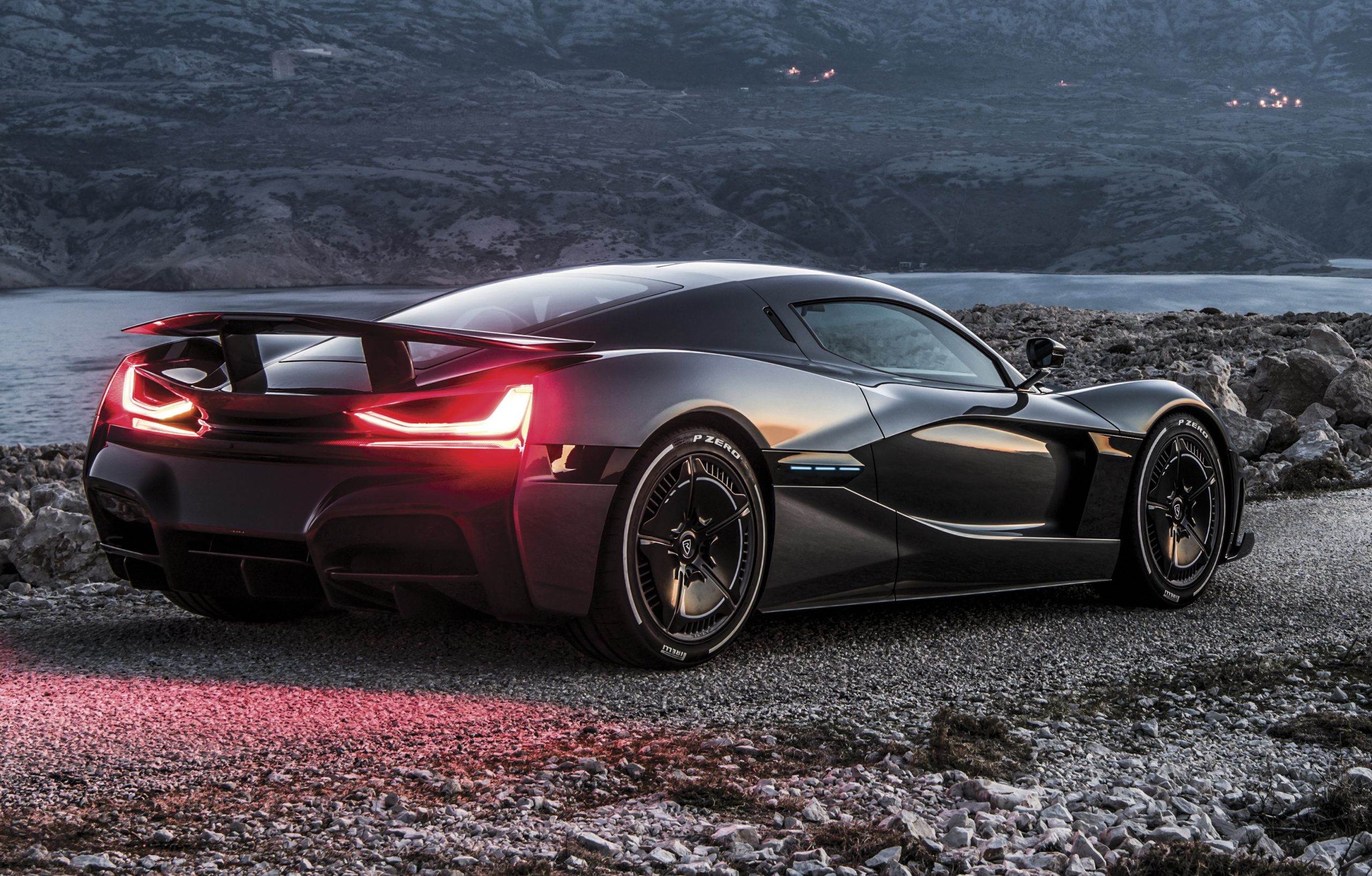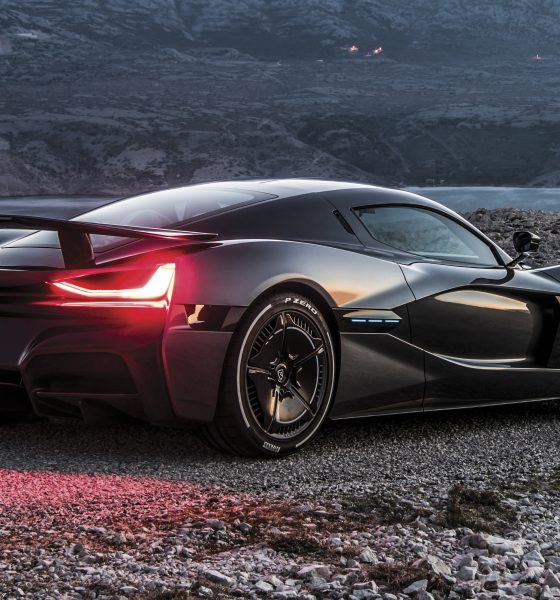

News
Porsche buys 10% stake in Rimac, tapping supercar-startup’s EV expertise
German automaker Porsche AG has taken a 10% stake in Croatian supercar startup Rimac Automobili, maker of the highly-anticipated and extremely exclusive C_Two all-electric supercar. With Porsche starting to dip its feet in the electric vehicle market with the Taycan (previously dubbed as the Mission E sedan), tapping into Rimac’s EV expertise would genuinely benefit the legacy automaker’s electric car initiatives.
Rimac has garnered a solid reputation over the years. Founded by Mate Rimac in 2009, Rimac Automobili became known as the maker of the Rimac Concept One, the world’s first $1 million all-electric supercar. Its successor, unveiled earlier this year as the Rimac C_Two, is even more impressive, with a 0-60 mph time of 1.85 seconds, a top speed of more than 250 mph, 1,914 horsepower, and a claimed driving range of 403 miles per charge. Rimac expects to manufacture 150 C_Twos during its production run, and as of April, the company revealed that the $2.1 million all-electric supercar was almost sold out.
In a statement, Porsche’s executive board deputy chairman Lutz Meschke remarked that the Croatian startup’s success with its first two vehicles were the credentials that genuinely impressed the German legacy carmaker.
“We feel that Rimac’s ideas and approaches are extremely promising, which is why we hope to enter into close collaboration with the company in the form of a development partnership. By developing the purely electric two-seaters super sports cars, like the Concept One or C_Two, as well as core vehicle systems, Rimac has impressively demonstrated its credentials in the field of electromobility,” the Porsche executive said.
Meschke’s statement about Rimac’s prowess in the development of vehicle systems rings true. Apart from producing all-electric supercars, after all, Rimac is also focused on the development of high-voltage battery technology and electric powertrains, as well as digital interfaces for EVs. Back in March, the Croatian supercar maker announced a deal with China’s Camel Group, a battery manufacturer, to build an electric motor and battery factory in the Asian country. Rimac also has a separate subsidiary focused on electric bicycles called Greyp Bikes.
Ultimately, Rimac CEO Mate Rimac noted that he considers the partnership with Porsche as a pivotal step forward for his company, as it becomes a component and systems supplier for the emerging EV market.
“This partnership now is an important step for Rimac on our way to become a component and system supplier of choice for the industry in electrification, connectivity and the exciting field of Advanced Driver Assistance Systems,” Rimac said.
The Rimac C_Two is expected to start production sometime in 2019, the same year that Porsche is set to roll out the Taycan. Considering the release date of the all-electric supercar, the C_Two would likely enjoy a year dominating the high-performance EV industry before it meets a formidable challenger — the next-generation Tesla Roadster — which is expected to start production sometime in 2020. The next-gen Roadster, which is priced at a more modest $200,000 – $250,000 for its base variant, costs just a fraction of the C_Two’s $2.1 million price tag. Performance-wise, the two vehicles are head-to-head, with the Roadster having a 0-60 mph time of 1.9 seconds and 10,000 Nm of torque compared to the C_Two’s 1.85 seconds and 2,300 Nm of torque.

News
Tesla FSD fleet is nearing 7 billion total miles, including 2.5 billion city miles
As can be seen on Tesla’s official FSD webpage, vehicles equipped with the system have now navigated over 6.99 billion miles.

Tesla’s Full Self-Driving (Supervised) fleet is closing in on almost 7 billion total miles driven, as per data posted by the company on its official FSD webpage.
These figures hint at the massive scale of data fueling Tesla’s rapid FSD improvements, which have been quite notable as of late.
FSD mileage milestones
As can be seen on Tesla’s official FSD webpage, vehicles equipped with the system have now navigated over 6.99 billion miles. Tesla owner and avid FSD tester Whole Mars Catalog also shared a screenshot indicating that from the nearly 7 billion miles traveled by the FSD fleet, more than 2.5 billion miles were driven inside cities.
City miles are particularly valuable for complex urban scenarios like unprotected turns, pedestrian interactions, and traffic lights. This is also the difference-maker for FSD, as only complex solutions, such as Waymo’s self-driving taxis, operate similarly on inner-city streets. And even then, incidents such as the San Francisco blackouts have proven challenging for sensor-rich vehicles like Waymos.
Tesla’s data edge
Tesla has a number of advantages in the autonomous vehicle sector, one of which is the size of its fleet and the number of vehicles training FSD on real-world roads. Tesla’s nearly 7 billion FSD miles then allow the company to roll out updates that make its vehicles behave like they are being driven by experienced drivers, even if they are operating on their own.
So notable are Tesla’s improvements to FSD that NVIDIA Director of Robotics Jim Fan, after experiencing FSD v14, noted that the system is the first AI that passes what he described as a “Physical Turing Test.”
“Despite knowing exactly how robot learning works, I still find it magical watching the steering wheel turn by itself. First it feels surreal, next it becomes routine. Then, like the smartphone, taking it away actively hurts. This is how humanity gets rewired and glued to god-like technologies,” Fan wrote in a post on X.
News
Tesla starts showing how FSD will change lives in Europe
Local officials tested the system on narrow country roads and were impressed by FSD’s smooth, human-like driving, with some calling the service a game-changer for everyday life in areas that are far from urban centers.

Tesla has launched Europe’s first public shuttle service using Full Self-Driving (Supervised) in the rural Eifelkreis Bitburg-Prüm region of Germany, demonstrating how the technology can restore independence and mobility for people who struggle with limited transport options.
Local officials tested the system on narrow country roads and were impressed by FSD’s smooth, human-like driving, with some calling the service a game-changer for everyday life in areas that are far from urban centers.
Officials see real impact on rural residents
Arzfeld Mayor Johannes Kuhl and District Administrator Andreas Kruppert personally tested the Tesla shuttle service. This allowed them to see just how well FSD navigated winding lanes and rural roads confidently. Kruppert said, “Autonomous driving sounds like science fiction to many, but we simply see here that it works totally well in rural regions too.” Kuhl, for his part, also noted that FSD “feels like a very experienced driver.”
The pilot complements the area’s “Citizen Bus” program, which provides on-demand rides for elderly residents who can no longer drive themselves. Tesla Europe shared a video of a demonstration of the service, highlighting how FSD gives people their freedom back, even in places where public transport is not as prevalent.
What the Ministry for Economic Affairs and Transport says
Rhineland-Palatinate’s Minister Daniela Schmitt supported the project, praising the collaboration that made this “first of its kind in Europe” possible. As per the ministry, the rural rollout for the service shows FSD’s potential beyond major cities, and it delivers tangible benefits like grocery runs, doctor visits, and social connections for isolated residents.
“Reliable and flexible mobility is especially vital in rural areas. With the launch of a shuttle service using self-driving vehicles (FSD supervised) by Tesla in the Eifelkreis Bitburg-Prüm, an innovative pilot project is now getting underway that complements local community bus services. It is the first project of its kind in Europe.
“The result is a real gain for rural mobility: greater accessibility, more flexibility and tangible benefits for everyday life. A strong signal for innovation, cooperation and future-oriented mobility beyond urban centers,” the ministry wrote in a LinkedIn post.
News
Tesla China quietly posts Robotaxi-related job listing
Tesla China is currently seeking a Low Voltage Electrical Engineer to work on circuit board design for the company’s autonomous vehicles.

Tesla has posted a new job listing in Shanghai explicitly tied to its Robotaxi program, fueling speculation that the company is preparing to launch its dedicated autonomous ride-hailing service in China.
As noted in the listing, Tesla China is currently seeking a Low Voltage Electrical Engineer to work on circuit board design for the company’s autonomous vehicles.
Robotaxi-specific role
The listing, which was shared on social media platform X by industry watcher @tslaming, suggested that Tesla China is looking to fill the role urgently. The job listing itself specifically mentions that the person hired for the role will be working on the Low Voltage Hardware team, which would design the circuit boards that would serve as the nervous system of the Robotaxi.
Key tasks for the role, as indicated in the job listing, include collaboration with PCB layout, firmware, mechanical, program management, and validation teams, among other responsibilities. The role is based in Shanghai.
China Robotaxi launch
China represents a massive potential market for robotaxis, with its dense urban centers and supportive policies in select cities. Tesla has limited permission to roll out FSD in the country, though despite this, its vehicles have been hailed as among the best in the market when it comes to autonomous features. So far, at least, it appears that China supports Tesla’s FSD and Robotaxi rollout.
This was hinted at in November, when Tesla brought the Cybercab to the 8th China International Import Expo (CIIE) in Shanghai, marking the first time that the autonomous two-seater was brought to the Asia-Pacific region. The vehicle, despite not having a release date in China, received a significant amount of interest among the event’s attendees.








